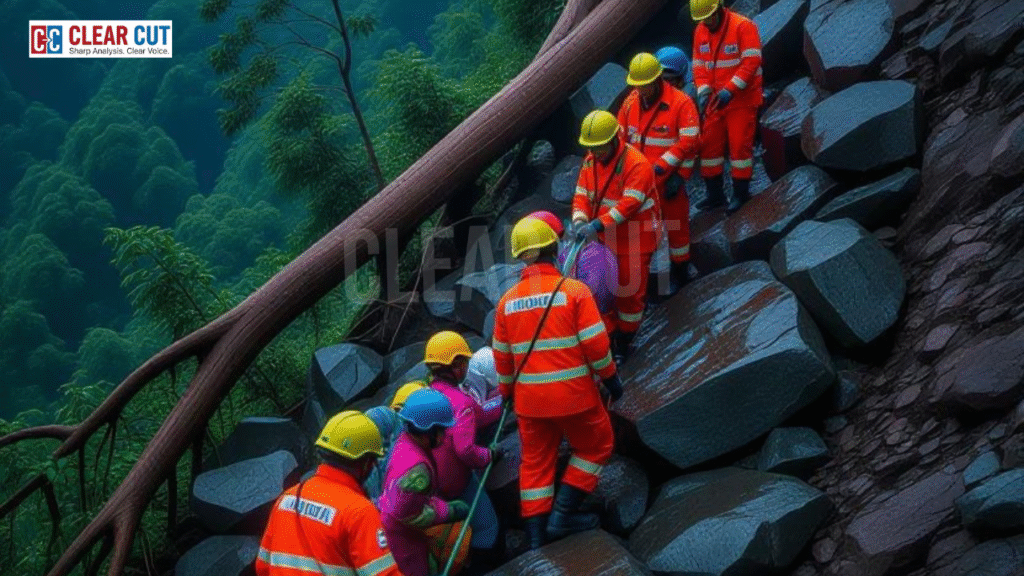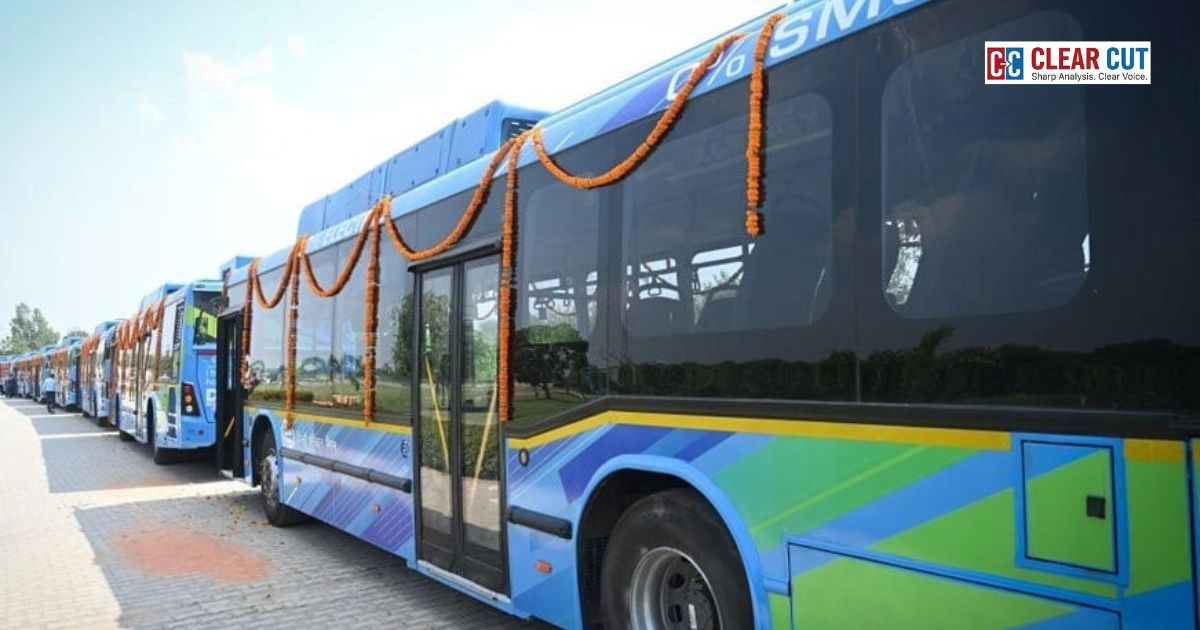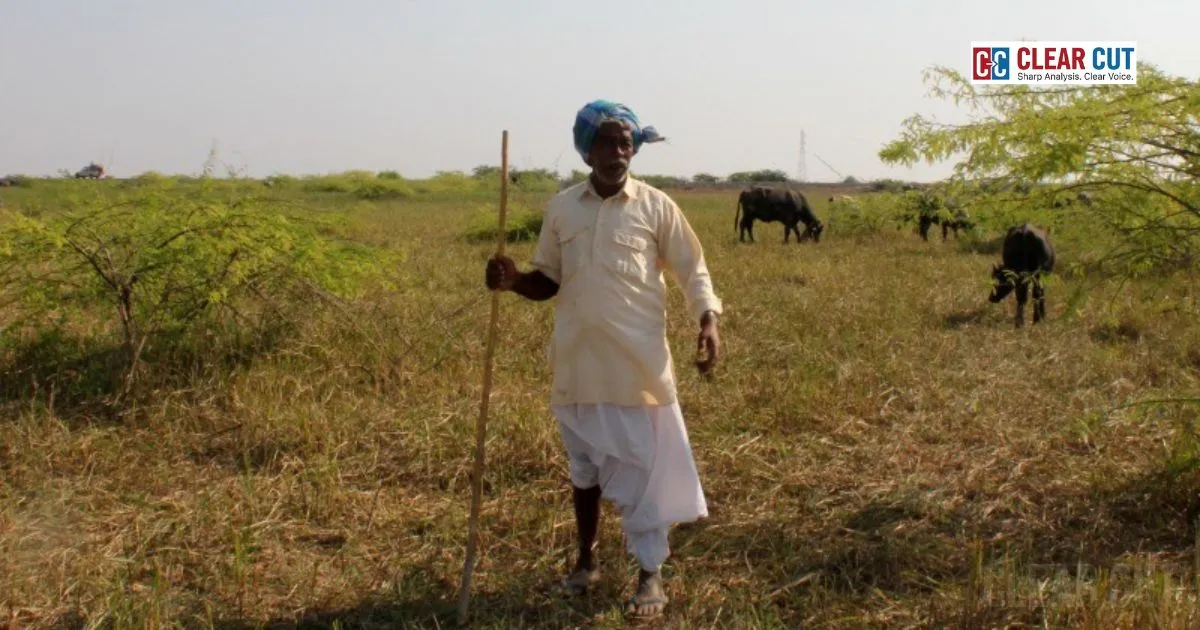Photo Credit: Paresh Kumar
Clear Cut Climate Desk
New Delhi, UPDATED: Aug 29, 2025 02:58 IST
Disasters don’t just happen. They are mostly man-made and can be attributed to poor planning, lousy infrastructure, greed and corruption. Climate stressed weather makes them deadlier. India is witnessing that in real time. From cloudbursts in the Himalayas to flooding across the plains. At the front line is the National Disaster Response Force (NDRF): the country’s specialist rescue arm that runs toward danger when everyone else is running away.
What is the NDRF?
The NDRF was constituted under Section 44 of the Disaster Management Act, 2005, to provide a specialized response to natural and man-made disasters. It included chemical, biological, radiological, and nuclear (CBRN) incidents. Today, it comprises 16 battalions, each with approximately 1,149 personnel, drawn from India’s Central Armed Police Forces (BSF, CRPF, CISF, ITBP, SSB, and Assam Rifles).
Each battalion fields 18 self-contained search-and-rescue teams of ~45 members, comprising engineers, technicians, dog squads, and medics pre-positioned across the country for rapid mobilization.
Battalions are strategically located from Guwahati to Gandhinagar, Pune to Varanasi, Bhatinda to Patna, Vijayawada to Jammu, Dehradun and NCR, ensuring national coverage and the ability to surge teams within hours as weather systems shift.

How it is led and trained
A Director General heads the Force and operates on para-military lines with a layered command structure (bn → sector HQ → DG). Personnel undergo high-angle rescue, deep-water, and floodcraft operations, rubble and collapsed-structure search, medical triage, and CBRN drills; 2024 was declared a focused year for Chemical, Biological, Radiological, and Nuclear (CBRN) preparedness, with additional Hazardous Materials (HAZMAT) capability inducted.
Major operations & milestones
- Uttarakhand cloudburst & floods (2013): among NDRF’s earliest large-scale multi-team mountain deployments. (Background: NDMA/NDRF archives.)
- Nepal earthquake (2015): India’s “Operation Maitri” saw NDRF teams pull survivors from pancaked buildings, recover remains, and run medical camps; NDRF documented rescues of injured, mass evacuations, and relief distribution under DG O.P. Singh’s on-site command.
- Kerala floods (2018): NDRF rescued 535 people, evacuated 24,690, and moved 119 livestock to safety, operating boats in swift-water conditions and coordinating air-drops with state and defense assets.
- Dozens of annual monsoon operations: from Assam and Bihar’s rivers to Maharashtra, Telangana, and Odisha, now form a predictable, climate-linked rhythm of deployments (NDRF/NDMA records).
Why is their work getting harder?
Monsoon volatility is surging. IMD expects “above-normal” rainfall for August–September 2025, lifting the all-India seasonal tally above 106% of the long-period average, which raises flood and landslide risk windows into late monsoon.
That forecast already aligns with the outcomes. Intense rain spells have triggered flash floods and landslides across the Himalayas, resulting in mass casualties in Himachal Pradesh, Uttarakhand, and Jammu and Kashmir. This has also caused widespread displacement downstream. The concerned authorities have opened dam gates and issued serial flood alerts as the river systems, such as the Ravi, Chenab, and Sutlej, are running high.
In Himachal Pradesh, rainfall between August 20 and 27 spiked to 396% of normal in Chamba and 334% in Kullu, forcing the suspension of pilgrimages, closure of schools, and blocking 582 roads, with a cumulative loss estimate of ₹2,623 crore since the onset of the monsoon.
For NDRF, this means more red-flag days, more parallel operations, and tighter turnarounds between deployments.
What the NDRF brings to the field
- Pre-positioning & surge: Teams move ahead of forecasted impact, often co-located with SDRF (state forces) and district administration to shorten the “golden hour.” (NDRF doctrine.)
- Inter-operability: Common boat types, radios, and ICS (Incident Command System) with state responders; CBRN modules for industrial leaks or rail/HWY HAZMAT.
- Urban search & rescue: Collapsed-structure operations with canine units, acoustic and fiber-optic search tools, skills honed in Nepal 2015 and major Indian building collapses.
- Community connect: NDRF conducts school and community mock drills and awareness on landslides, lightning, and flood evacuation annually through its regional hubs. (NDRF public outreach.)
Inside a deployment: a typical flood day
A 45-member team deploys before first light with inflatable boats, Operation Base Modules (OBMs), Personal Protective Equipment (PPE), and first aid. A reconnaissance pair maps safe channels; swimmers mark submerged hazards; a medical detachment sets up triage near the high-ground shelter. By midday, relief links up with district officials for ration drops; by nightfall, a rotation takes over, while engineers scout alternate routes through blocked culverts. It is method over heroics; repetition creates speed.
The Road Ahead: From Response to Resilience!
Even as the Force sharpens its edge, India’s disaster policy is shifting from response to risk reduction. Particularly in areas such as earthquake safety, landslide zoning, and early warning dissemination, led by the Ministry of Earth Sciences and the NDMA. The government’s 2025 priorities emphasize stronger codes, improved communication, and better last-mile warning systems to protect lives before teams have to launch boats.
But the calculus is unforgiving: more people, more assets, more extreme weather. The NDRF can save lives; it can’t move towns out of rivers, rebuild hillsides, or fix encroachments. That will demand state-level planning discipline and citizen compliance.




